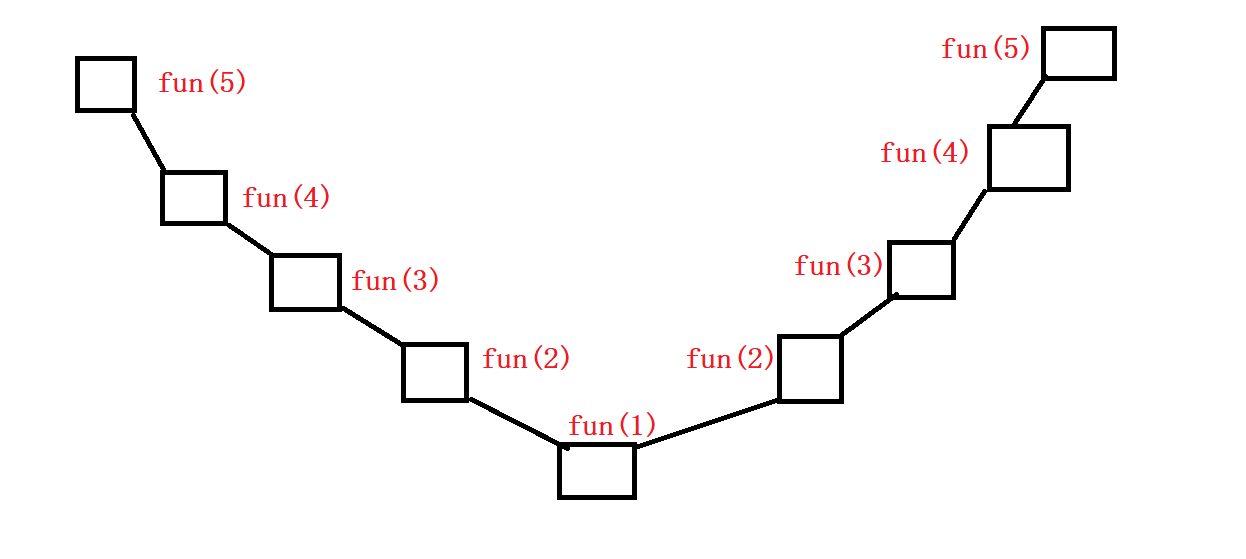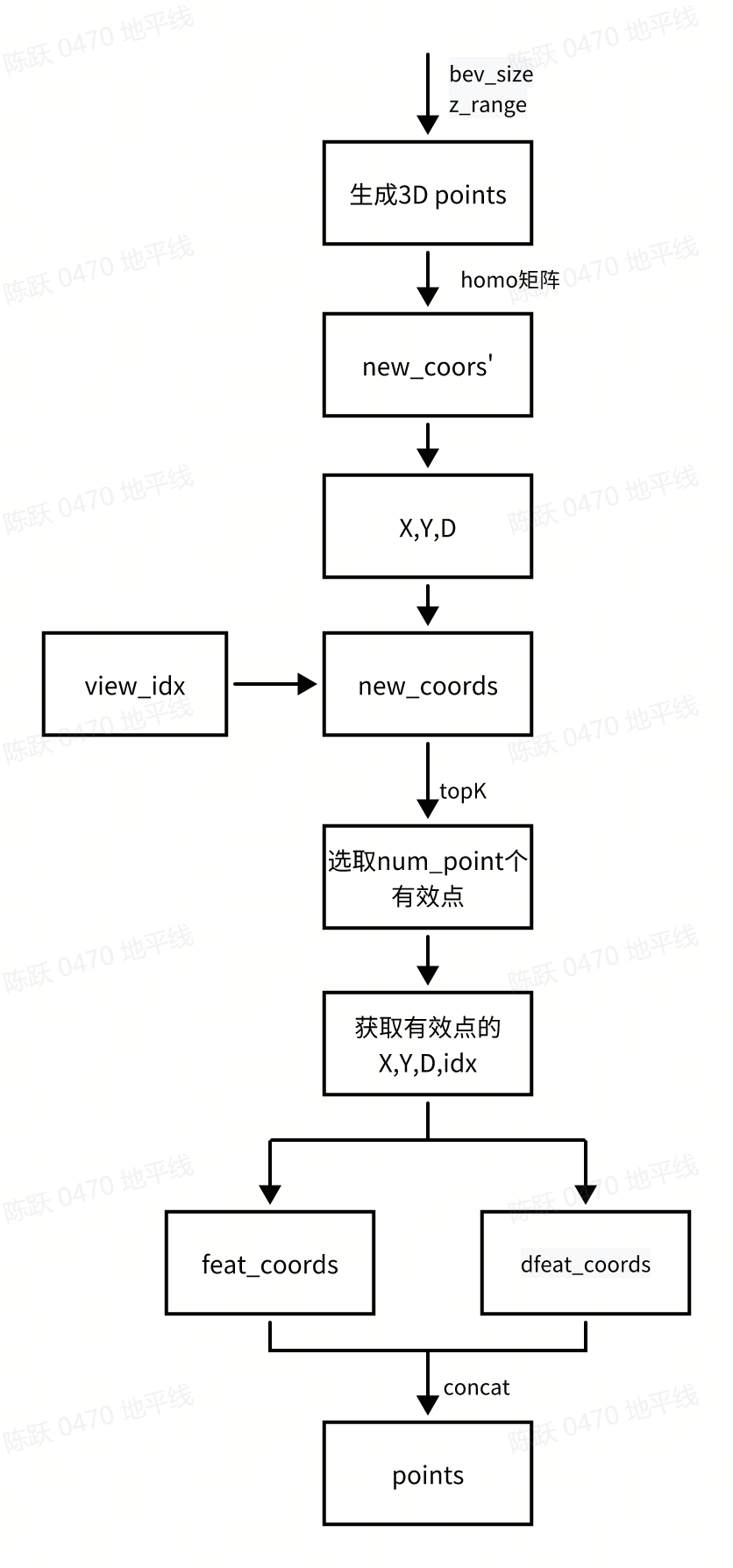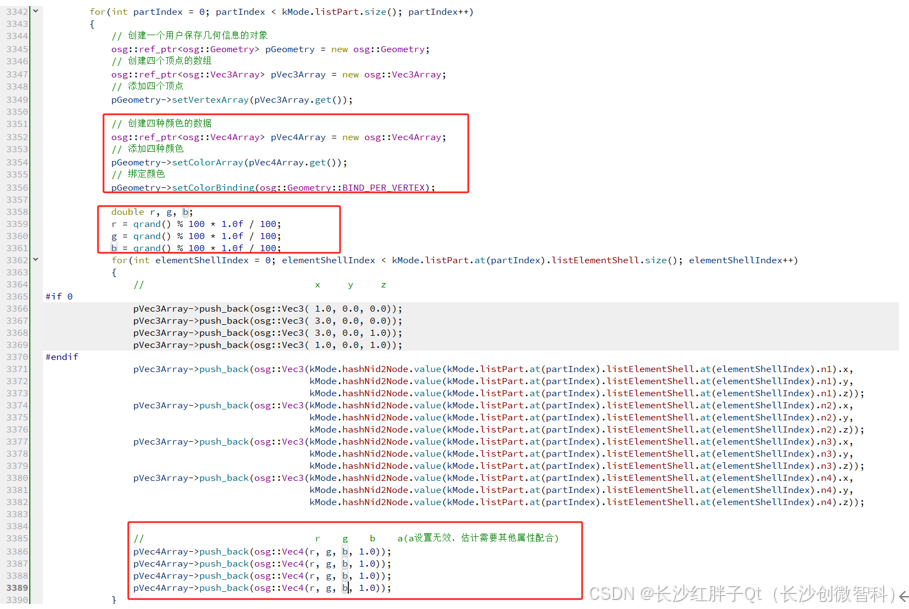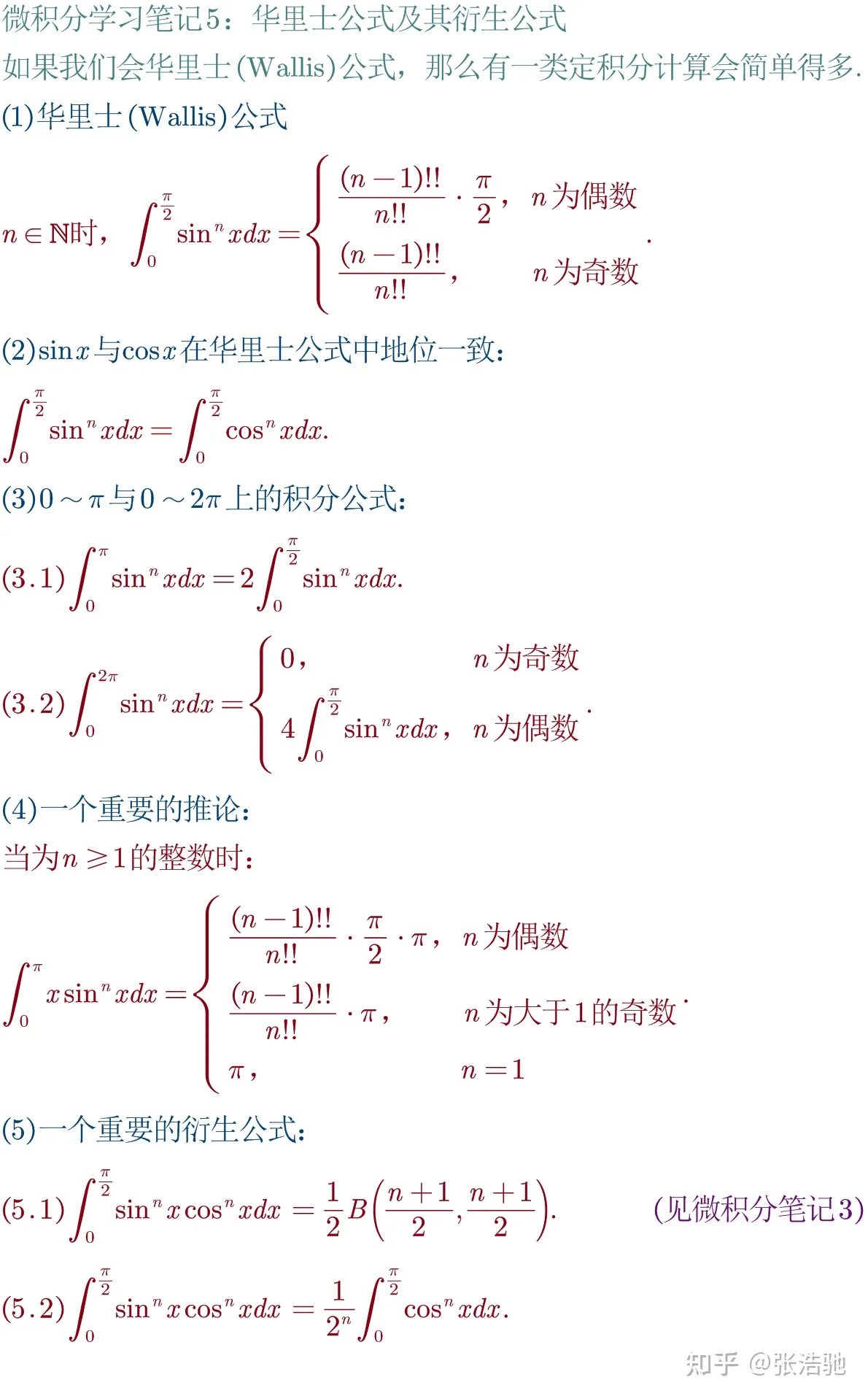普通堆实现的 Dijkstra 算法
- 时间复杂度为
O(m * logm),m 为边数
-
distance[i]表示从源点到 i 点的最短距离,visited[i]表示 i 节点是否从小根堆弹出过 -
准备好小根堆,
小根堆存放记录:(x 点,源点到 x 的距离),小根堆根据距离排序 -
令 distance[源点] = 0,(源点,0)入堆
-
从小根堆弹出(u 点,源点到 u 的距离)
a. 如果 visited[u] == true,啥也不做,重复步骤 4
b. 如果 visited[u] == false,令 visited[u] = true,u 就算弹出过了,
然后考察 u 的每一条边,假设某条边去往 v 点,边权为 w
1)如果 visited[v] == false 并且 distance[u] + w < distance[v],
令 distace[v] = distance[u] + w,把(v,distance[u] + w)加入小根堆
2)处理完 u 的每条边后重复步骤 4
-
小根堆为空,过程结束。
P4779 【模板】单源最短路径(标准版)
#include <iostream>
#include <vector>
#include <algorithm>
#include <queue>using namespace std;struct cmp {bool operator()(pair<int, int> &p1, pair<int, int> &p2) {return p1.second > p2.second;}
};int main() {int n, m, s;cin >> n >> m >> s;vector<vector<pair<int, int>>> graph(n + 1);// 建图for (int i = 0, u, v, w; i < m; ++i) {cin >> u >> v >> w;graph[u].emplace_back(make_pair(v, w));}// 标记是否从堆中弹出过vector<bool> visited(n + 1, false);priority_queue<pair<int, int>, vector<pair<int, int>>, cmp> heap;vector<int> distances(n + 1, 0x7fffffff);// 源点入堆heap.emplace(make_pair(s, 0));distances[s] = 0;while (!heap.empty()) {auto top = heap.top();heap.pop();int u = top.first;if (visited[u]) continue;visited[u] = true;for (const auto &item: graph[u]) {int v = item.first;int w = item.second;if (visited[v]) continue;if (distances[v] > distances[u] + w) {distances[v] = distances[u] + w;heap.emplace(make_pair(v, distances[v]));}}}for (int i = 1; i <= n; ++i)cout << distances[i] << " ";
}
743. 网络延迟时间
#include <iostream>
#include <vector>
#include <unordered_set>
#include <algorithm>
#include <queue>using namespace std;class Solution {
public:struct cmp {bool operator()(pair<int, int> &p1, pair<int, int> &p2) {return p1.second > p2.second;}};// 节点编号从 1 开始int networkDelayTime(vector<vector<int>> ×, int n, int k) {// 邻接表建图vector<vector<pair<int, int>>> graph(n + 1);for (const auto &item: times)graph[item[0]].emplace_back(make_pair(item[1], item[2]));// 记录从源点到每个点的距离vector<int> distance(n + 1, INT_MAX);// 记录是否从堆中弹出过vector<int> visited(n + 1, false);// 小根堆:(u,源点到 u 的距离)priority_queue<pair<int, int>, vector<pair<int, int>>, cmp> heap;// k 到自身距离为 0heap.emplace(make_pair(k, 0));distance[k] = 0;while (!heap.empty()) {auto p = heap.top();heap.pop();int u = p.first;// 已经确定距离的不再处理if (visited[u] == true) continue;visited[u] = true;for (const auto &item: graph[u]) {int v = item.first;int w = item.second;// 已经确定距离的不再处理if (visited[v] == true) continue;// 尝试源点在经过 u 的情况下到达 v ,是否可以使到达 v 的距离缩短if (distance[v] > distance[u] + w) {distance[v] = distance[u] + w;// 这条边入堆heap.emplace(v, distance[v]);}}}int res = 0;for (int i = 1; i <= n; ++i) {// 有的点到达不了if (distance[i] == INT_MAX) return -1;res = max(res, distance[i]);}return res;}
};
反向索引堆实现 Dijkstra 算法
-
时间复杂度为
O(m * logn),m 为边数,n 为节点数 -
堆中存放
(u,d),根据 d 排序。普通堆无法找到指定 u 在实现堆的底层数组中的具体位置。反向索引堆的实现需要建立一张反向索引表,记录 u 在数组中的位置,这样就能直接在堆中修改 u 的 d 信息,然后调整堆,同时也要调整反向索引表。
-
把(源点,0)加入反向索引堆,过程开始
-
反向索引堆弹出(u,源点到 u 的距离),考察 u 的每条边,假设某条边去往 v,边权为 w
a. 如果 v 没有进入过反向索引堆,新增记录(v,源点到 u 的距离 + w)
b. 如果 v 曾经从反向索引堆弹出过,忽略
c. 如果 v 在反向索引堆里,看看源点到 v 的距离能否变小,能就调整堆,否则跳过
d. 处理完 u 的每条边,重复步骤 2
-
反向索引堆为空过程结束。distance 里记录了源点到每个点的最短距离。
P4779 【模板】单源最短路径(标准版)
#include <iostream>
#include <vector>
#include <algorithm>using namespace std;int n, m, s;// 链式前向星
vector<int> head;
vector<int> nxt;
vector<int> to;
vector<int> weight;
int cnt;void initGraph() {// 点的编号从 1 开始// resize 只会将新增的位置设置为新的值head.resize(n + 1, 0);fill(head.begin(), head.end(), 0);nxt.resize(m + 1);to.resize(m + 1);weight.resize(m + 1);// 边的编号从 1 开始cnt = 1;
}void addEdge(int u, int v, int w) {nxt[cnt] = head[u];to[cnt] = v;weight[cnt] = w;head[u] = cnt;cnt++;
}vector<int> heap;
int heapSize;
// 反向索引表
// where[v] = -2,表示v这个节点,已经弹出过了
// where[v] = -1,表示v这个节点,从来没有进入过堆
// where[v] = i(>=0),表示 v 这个节点,在堆上的 i 位置
// 所有 where 的 set 操作都包含在堆的操作中
vector<int> where;
// 记录源点到目标点的最短距离
// 所有 distances 的 set 操作与堆的操作分离
vector<int> distances;void initHeap() {heap.resize(n);heapSize = 0;// 初始状态都没进过堆where.resize(n + 1, -1);fill(where.begin(), where.end(), -1);// 初始最短距离都是无穷大distances.resize(n + 1, 0x7fffffff);fill(distances.begin(), distances.end(), 0x7fffffff);
}// 自顶向下调整堆
void adjustHeapTopDown(int curIndex) {auto temp = heap[curIndex];int leftChildIndex = 2 * curIndex + 1;while (leftChildIndex <= (heapSize - 1)) {if ((leftChildIndex < heapSize - 1)&& distances[heap[leftChildIndex]] > distances[heap[leftChildIndex + 1]])leftChildIndex++;if (distances[heap[leftChildIndex]] >= distances[temp]) break;heap[curIndex] = heap[leftChildIndex];// 修改反向索引表where[heap[leftChildIndex]] = curIndex;curIndex = leftChildIndex;leftChildIndex = 2 * curIndex + 1;}heap[curIndex] = temp;// 修改反向索引表where[temp] = curIndex;
}// 自下而上调整堆
void adjustHeapBottomUP(int curIndex) {auto temp = heap[curIndex];int parentIndex = (curIndex - 1) / 2;while (parentIndex >= 0) {if (distances[heap[parentIndex]] <= distances[temp]) break;heap[curIndex] = heap[parentIndex];// 修改反向索引表where[heap[parentIndex]] = curIndex;curIndex = parentIndex;if (curIndex == 0) break;parentIndex = (curIndex - 1) / 2;}heap[curIndex] = temp;// 修改反向索引表where[temp] = curIndex;
}void addToHeap(int v) {heap[heapSize] = v;heapSize++;adjustHeapBottomUP(heapSize - 1);
}int getTop() {int res = heap[0];heap[0] = heap[heapSize - 1];heapSize--;adjustHeapTopDown(0);where[res] = -2;return res;
}void addOrUpdateOrIgnore(int v, int d) {if (where[v] == -2) {return;} else if (where[v] == -1) {distances[v] = d;// v 不在堆中,新增记录addToHeap(v);} else if (where[v] >= 0) {// 经过 u 点到达 v 点能使源点到达 v 点距离更短,就更新if (distances[v] > d) {distances[v] = d;// 修改堆中原有的那条,再向上调整(距离变短,只需要往上调整)adjustHeapBottomUP(where[v]);}}
}int main() {cin >> n >> m >> s;// 建图initGraph();for (int i = 0, u, v, w; i < m; ++i) {cin >> u >> v >> w;addEdge(u, v, w);}initHeap();addOrUpdateOrIgnore(s, 0);while (heapSize > 0) {int u = getTop();for (int edge = head[u]; edge != 0; edge = nxt[edge])addOrUpdateOrIgnore(to[edge], distances[u] + weight[edge]);}for (int i = 1; i <= n; ++i)cout << distances[i] << " ";
}
743. 网络延迟时间
#include <iostream>
#include <vector>
#include <algorithm>using namespace std;int n, m, s;// 链式前向星
vector<int> head;
vector<int> nxt;
vector<int> to;
vector<int> weight;
int cnt;void initGraph() {// 点的编号从 1 开始// resize 只会将新增的位置设置为新的值head.resize(n + 1, 0);fill(head.begin(), head.end(), 0);nxt.resize(m + 1);to.resize(m + 1);weight.resize(m + 1);// 边的编号从 1 开始cnt = 1;
}void addEdge(int u, int v, int w) {nxt[cnt] = head[u];to[cnt] = v;weight[cnt] = w;head[u] = cnt;cnt++;
}vector<int> heap;
int heapSize;
// 反向索引表
// where[v] = -2,表示v这个节点,已经弹出过了
// where[v] = -1,表示v这个节点,从来没有进入过堆
// where[v] = i(>=0),表示 v 这个节点,在堆上的 i 位置
// 所有 where 的 set 操作都包含在堆的操作中
vector<int> where;
// 记录源点到目标点的最短距离
// 所有 distances 的 set 操作与堆的操作分离
vector<int> distances;void initHeap() {heap.resize(n);heapSize = 0;// 初始状态都没进过堆where.resize(n + 1, -1);fill(where.begin(), where.end(), -1);// 初始最短距离都是无穷大distances.resize(n + 1, 0x7fffffff);fill(distances.begin(), distances.end(), 0x7fffffff);
}// 自顶向下调整堆
void adjustHeapTopDown(int curIndex) {auto temp = heap[curIndex];int leftChildIndex = 2 * curIndex + 1;while (leftChildIndex <= (heapSize - 1)) {if ((leftChildIndex < heapSize - 1)&& distances[heap[leftChildIndex]] > distances[heap[leftChildIndex + 1]])leftChildIndex++;if (distances[heap[leftChildIndex]] >= distances[temp]) break;heap[curIndex] = heap[leftChildIndex];// 修改反向索引表where[heap[leftChildIndex]] = curIndex;curIndex = leftChildIndex;leftChildIndex = 2 * curIndex + 1;}heap[curIndex] = temp;// 修改反向索引表where[temp] = curIndex;
}// 自下而上调整堆
void adjustHeapBottomUP(int curIndex) {auto temp = heap[curIndex];int parentIndex = (curIndex - 1) / 2;while (parentIndex >= 0) {if (distances[heap[parentIndex]] <= distances[temp]) break;heap[curIndex] = heap[parentIndex];// 修改反向索引表where[heap[parentIndex]] = curIndex;curIndex = parentIndex;if (curIndex == 0) break;parentIndex = (curIndex - 1) / 2;}heap[curIndex] = temp;// 修改反向索引表where[temp] = curIndex;
}void addToHeap(int v) {heap[heapSize] = v;heapSize++;adjustHeapBottomUP(heapSize - 1);
}int getTop() {int res = heap[0];heap[0] = heap[heapSize - 1];heapSize--;adjustHeapTopDown(0);where[res] = -2;return res;
}void addOrUpdateOrIgnore(int v, int d) {if (where[v] == -2) {return;} else if (where[v] == -1) {distances[v] = d;// v 不在堆中,新增记录addToHeap(v);} else if (where[v] >= 0) {// 经过 u 点到达 v 点能使源点到达 v 点距离更短,就更新if (distances[v] > d) {distances[v] = d;// 修改堆中原有的那条,再向上调整(距离变短,只需要往上调整)adjustHeapBottomUP(where[v]);}}
}class Solution {
public:int networkDelayTime(vector<vector<int>> ×, int N, int k) {n = N;m = times.size();s = k;// 建图initGraph();for (const auto &item: times)addEdge(item[0], item[1], item[2]);initHeap();addOrUpdateOrIgnore(s, 0);while (heapSize > 0) {int u = getTop();for (int edge = head[u]; edge != 0; edge = nxt[edge])addOrUpdateOrIgnore(to[edge], distances[u] + weight[edge]);}int res = 0;for (int i = 1; i <= n; ++i) {if (distances[i] == 0x7fffffff)return -1;res = max(res, distances[i]);}return res;}
};
其他练习题
1631. 最小体力消耗路径
#include <iostream>
#include <vector>
#include <algorithm>
#include <queue>using namespace std;class Solution {
public:struct cmp {bool operator()(vector<int> &v1, vector<int> &v2) {return v1[2] > v2[2];}};vector<int> move{-1, 0, 1, 0, -1};int rows, columns;bool isCoordinateLegal(int row, int column) {return row >= 0 && row < rows && column >= 0 && column < columns;}int minimumEffortPath(vector<vector<int>> &heights) {rows = heights.size();columns = heights[0].size();// 源点到各个点的体力值,记录的是这条路上相邻格子高度差绝对值的最大值vector<vector<int>> distance(rows, vector<int>(columns, INT_MAX));// 标记是否从堆中弹出过vector<vector<bool>> visited(rows, vector<bool>(columns, false));// (x, y, 体力值),根据体力值排序priority_queue<vector<int>, vector<vector<int>>, cmp> heap;// 源点入堆heap.emplace(vector<int>{0, 0, 0});distance[0][0] = 0;while (!heap.empty()) {auto t = heap.top();heap.pop();int x = t[0];int y = t[1];int cost = t[2];if (x == rows - 1 && y == columns - 1) return cost;if (visited[x][y]) continue;visited[x][y] = true;for (int i = 0; i < 4; ++i) {int nx = x + move[i];int ny = y + move[i + 1];// 非法或者已经从堆弹出过,就忽略if (!isCoordinateLegal(nx, ny) || visited[nx][ny]) continue;// 相邻高度差的绝对值int gap = abs(heights[nx][ny] - heights[x][y]);// 这条路径到点 [nx, ny] 的体力值// 以前的代价是路径长度,这题的代价是这条路上相邻格子高度差绝对值的最大值int newCost = max(cost, gap);// 代价可以变小,就更新if (newCost < distance[nx][ny]) {distance[nx][ny] = newCost;heap.emplace(vector<int>{nx, ny, newCost});}}}return -1;}
};
778. 水位上升的泳池中游泳
#include <iostream>
#include <vector>
#include <algorithm>
#include <queue>using namespace std;class Solution {
public:struct cmp {bool operator()(vector<int> &v1, vector<int> &v2) {return v1[2] > v2[2];}};vector<int> move{-1, 0, 1, 0, -1};int rows, columns;bool isCoordinateLegal(int row, int column) {return row >= 0 && row < rows && column >= 0 && column < columns;}int swimInWater(vector<vector<int>> &grid) {rows = grid.size();columns = grid[0].size();// 源点到各个点的最小游泳时间vector<vector<int>> distance(rows, vector<int>(columns, INT_MAX));// 标记是否从堆中弹出过vector<vector<bool>> visited(rows, vector<bool>(columns, false));// (x, y, 最小游泳时间),根据最小游泳时间排序priority_queue<vector<int>, vector<vector<int>>, cmp> heap;// 至少要等到时间 grid[0][0]distance[0][0] = grid[0][0];heap.emplace(vector<int>{0, 0, grid[0][0]});while (!heap.empty()) {auto t = heap.top();heap.pop();int x = t[0];int y = t[1];int cost = t[2];if (x == rows - 1 && y == columns - 1) return cost;if (visited[x][y]) continue;visited[x][y] = true;for (int i = 0; i < 4; ++i) {int nx = x + move[i];int ny = y + move[i + 1];// 非法或者已经从堆弹出过,就忽略if (!isCoordinateLegal(nx, ny) || visited[nx][ny]) continue;// 新的代价是游到附近所要等待的最大时间int newCost = max(cost, grid[nx][ny]);// 代价可以变小,就更新if (newCost < distance[nx][ny]) {distance[nx][ny] = newCost;heap.emplace(vector<int>{nx, ny, newCost});}}}return -1;}
};
![P2710 数列/P2042 [NOI2005] 维护数列](https://img2024.cnblogs.com/blog/2940791/202409/2940791-20240918205535207-1852091785.png)









